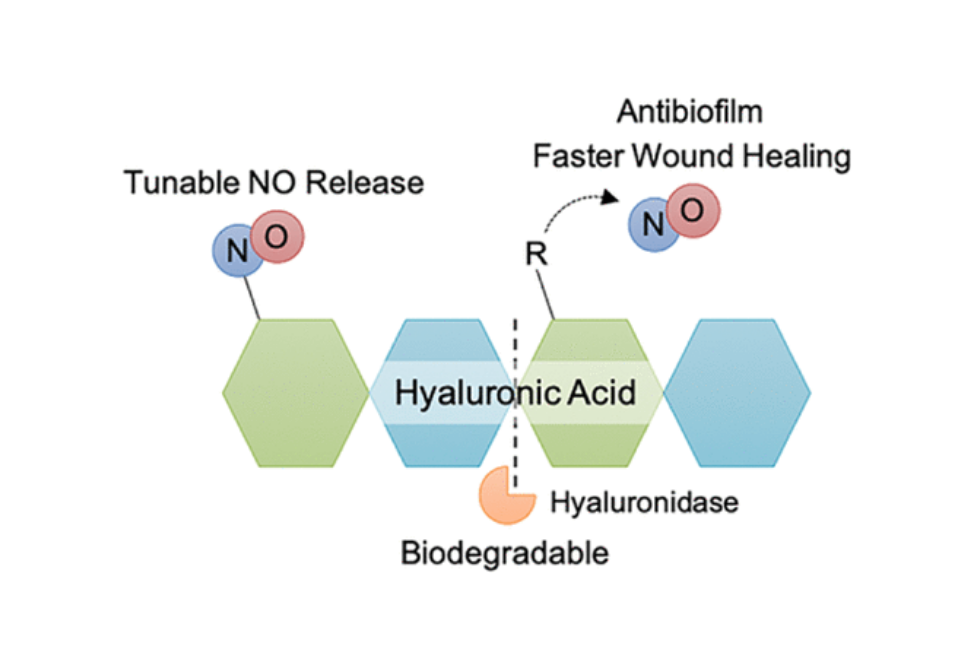Nitric Oxide-Releasing Hyaluronic Acid as an Antibacterial Agent for Wound Therapy
Abstract
Taking advantage of their respective wound-healing roles in physiology, the dual activity of hyaluronic acid (HA) and nitric oxide (NO) was combined to create a single-agent wound therapeutic. Carboxylic acid groups of HA (6 and 90 kDa) were chemically modified with a series of alkylamines via carbodiimide chemistry to provide secondary amines for subsequent N-diazeniumdiolate NO donor formation. The resulting NO-releasing HA derivatives stored 0.3–0.6 μmol NO mg–1 and displayed diverse release kinetics (5–75 min NO-release half-lives) under physiological conditions. The 6 kDa HA with terminal primary amines and intermediate release kinetics exhibited broad-spectrum bactericidal activity against common wound pathogens, including planktonic methicillin-resistant Staphylococcus aureus as well as planktonic and biofilm-based multidrug-resistant Pseudomonas aeruginosa. The treatment of infected murine wounds with NO-releasing HA facilitated more rapid wound closure and decreased the quantity of the P. aeruginosa genetic material in the remaining wound tissue. Hyaluronidase readily degraded the HA derivatives, indicating that NO donor modification did not prohibit endogenous biodegradation pathways.
Citation
Nitric Oxide-Releasing Hyaluronic Acid as an Antibacterial Agent for Wound Therapy
Sara E. Maloney, Kyle V. McGrath, Mona Jasmine R. Ahonen, Daniel S. Soliman, Evan S. Feura, Hannah R. Hall, Shannon M. Wallet, Robert Maile, and Mark H. Schoenfisch
Biomacromolecules 2021 22 (2), 867-879
DOI: 10.1021/acs.biomac.0c01583


